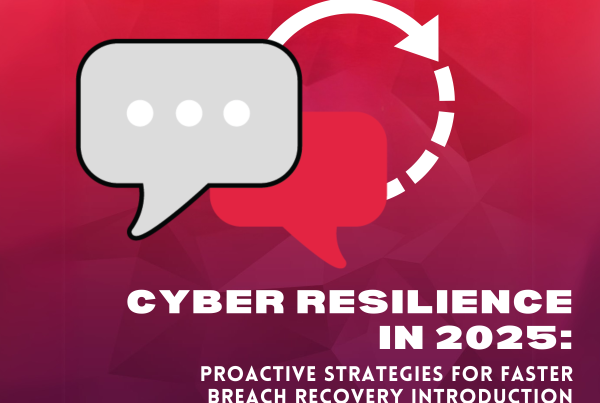The impact of artificial intelligence (AI) on businesses, customers, and cybercriminals can be both positive and negative. On one hand, AI led to useful tools such as speech recognition (e.g., Siri), search engines (e.g., Google), and facial recognition software (e.g., Facebook). Financial institutions have also used AI to prevent fraudulent activities, resulting in billions of dollars in savings each year. However, the integration of AI in cybersecurity raises concerns about its potential to either better or worsen digital security for companies.
The field of cybersecurity faces several unique challenges, including many exploitable vulnerabilities, the need to protect hundreds of devices within each organization, numerous angles that cybercriminals can attack from, a shortage of skilled security professionals, and overwhelming amounts of data that are beyond a human’s capacity. These make analysis a daunting task.
AI holds great promise for cybersecurity. It can improve the analysis, understanding, and prevention of cybercrime, improving the safety of companies and customers. However, it’s important to recognize that AI can be resource-intensive and may not always be practical. It can also be used by cybercriminals to enhance their attacks. One industry that has seen benefits from the application of AI is virtual private networks (VPNs), as machine learning enables them to protect users from online threats posed by AI.
The scope of AI in cybersecurity is a topic of ongoing discussion, with its ability to rapidly analyze data being a key advantage. Let’s delve into the benefits of integrating AI with cybersecurity.
Advanced Threat Detection and Prevention
Traditional cybersecurity approaches often depend on rule-based systems that need constant updates to keep pace with emerging threats. This reactive approach can be ineffective against rapidly evolving attacks. AI, on the other hand, brings a proactive and dynamic dimension to threat detection and prevention.
Machine learning algorithms can analyze large amounts of data. These include network traffic, user behavior, and system logs, to identify patterns and outliers that may signify malicious activity. By establishing a baseline of “normal” behavior, AI-powered systems can quickly detect signs of cyber threats. These systems can identify zero-day exploits, polymorphic malware, and sophisticated phishing attacks that might otherwise go undetected by conventional security measures.
Enhanced Incident Response and Automation
In the event of a cyber-attack, a swift and accurate incident response is important to minimize damage and lessen risks. AI can greatly enhance incident response capabilities, enabling security teams to respond more efficiently and effectively.
AI-powered systems can automatically analyze and prioritize security alerts, reducing the burden on human analysts. By using natural language processing and machine learning algorithms, these systems can make sense of large amounts of security data from various sources. This provides valuable insights to incident responders. This enables quick decision-making, improves response times, and reduces the risk of false positives or false negatives.
Furthermore, AI can automate repetitive tasks, such as malware analysis, log analysis, and vulnerability assessments. This automation allows security professionals to focus on more complex and strategic aspects of incident response, leading to addressing threats faster.
Proactive Threat Hunting and Intelligence
To stay ahead of cyber threats, organizations must adopt a proactive approach to cybersecurity. AI plays an important role by empowering security teams to conduct proactive threat hunting and gather actionable intelligence.
By analyzing historical data and identifying commonalities across different attack vectors, AI algorithms can uncover hidden patterns and potential vulnerabilities within an organization’s infrastructure. This proactive threat hunting approach enables security teams to discover potential weaknesses and address them before they are exploited by attackers.
Additionally, AI can use external threat intelligence sources, such as global threat feeds and dark web monitoring, to see emerging threats and provide early warnings. By constantly monitoring and analyzing large amounts of data, AI-powered systems can stay up to date with the evolving threat landscape, enabling organizations to stay one step ahead of cybersecurity threats.
Intelligent User Authentication and Access Control
User authentication and access control are important parts of cybersecurity. Traditional methods, such as passwords or token-based systems, have vulnerabilities, such as weak passwords, phishing attacks, and social engineering. AI can help deal with these challenges and strengthen the security of user authentication and access control mechanisms.
AI algorithms can analyze user behavior patterns, device characteristics, and contextualize information to set a baseline of normal user activity. By continuously watching and analyzing these patterns, AI can detect changes and suspicious behavior, flagging potential unauthorized access attempts or compromised accounts. This approach, known as behavioral biometrics, is a stronger and more dynamic form of user authentication.
In addition, AI-powered access control systems can dynamically change user privileges based on real-time risk assessments. If an account looks like it has been compromised, AI can automatically trigger additional authentication measures or deny access, thereby limiting the potential impact of a breach.
Adaptive and Self-Learning Systems
The dynamic nature of cyber threats requires security systems to constantly adapt and evolve. AI fosters the development of adaptive and self-learning cybersecurity systems that can improve their own effectiveness over time.
Machine learning algorithms can be trained on large datasets to identify new attack patterns and update their models accordingly. This adaptive capability allows AI-powered systems to evolve alongside emerging threats, making sure they remain effective against sophisticated attacks.
Moreover, AI can use feedback loops and reinforcement learning techniques to improve security controls and response strategies. By constantly learning from past incidents and security outcomes, AI systems can improve their decision-making processes and become better at predicting and preventing future threats.
Conclusion
Machine learning plays an important role in cybersecurity. They enable tasks such as data classification, data clustering, recommending courses of action, synthesizing possibilities, and predictive forecasting. AI and machine learning are crucial for preventing cybersecurity threats, as they can analyze large amounts of data to detect risks like phishing and malware. Additionally, they can track user behavior, detect unwanted actions, and react accordingly, stopping threats in real-time without disrupting business processes and uncovering data that may escape human detection.
AI has many uses within cybersecurity, including breach risk prediction, phishing detection, malware detection and prevention, user authentication, spam filtering, password protection, bot identification, behavioral analysis, network segmentation and security, fraud detection, dark web threat intelligence, incident response, vulnerability management, and identity and access management.
While AI has the potential to greatly improve cybersecurity, there are downsides to consider. Organizations require additional resources and financial investments to build and maintain AI systems. Acquiring diverse datasets for training these systems can also be time-consuming and costly. Insufficient data can lead to incorrect results and false positives. Furthermore, cybercriminals can use AI to launch more advanced attacks.
In conclusion, AI is critical for enhancing IT security performance on a large scale. It provides analysis and threat identification that helps security professionals minimize breach risk, prioritize risks, direct incident response, and identify malware attacks before they happen. Despite potential downsides, AI will continue to drive cybersecurity forward and improve organizations’ overall security systems.
About IPV Network
Since 2016, IPV Network has been a trusted partner of leading enterprises in the Philippines. It brings the best-of-breed cybersecurity solutions. IPV network helps businesses identify, protect, detect, respond, and recover from cyber threats. Email us at [email protected] or call (02) 8564 0626 to get your FREE cybersecurity posture assessment!
Sources:
https://www.techtarget.com/searchsecurity/tip/How-hackers-use-AI-
https://www.knowledgehut.com/blog/security/ai-in-cyber-security
https://terranovasecurity.com/ai-in-cyber-security/https://www.engati.com/blog/ai-for-cybersecurity


